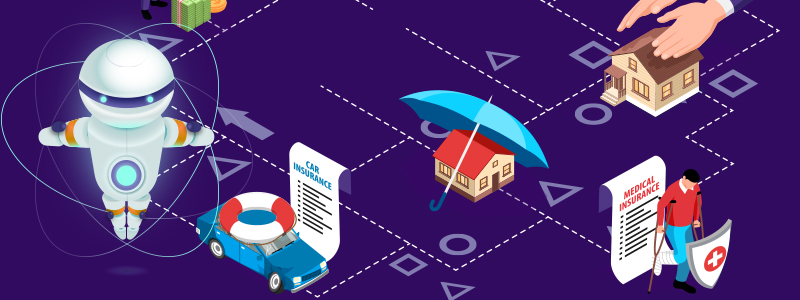In the insurance industry, underwriting is evaluating and qualifying potential customers for coverage. The underwriting process is one of the most critical phases of the insurance business. A company needs to evaluate a potential policyholder’s risk characteristics to determine whether the applicant is a reasonable risk for coverage. Unfortunately, the underwriting process can be tedious and time-consuming, especially in a quickly changing and evolving industry with new risks, new risks and exposures, and new technologies to consider. Artificial Intelligence (AI) is changing the underwriting process by automating certain parts. Here’s how AI is improving underwriting in the insurance industry.
AI Helps Assess Risk
AI can more accurately assess risk. The insurance industry is dealing with changing and evolving threats, exposures, and technologies that are difficult to keep up with within the human-driven underwriting process. These changes require a workforce that can adapt quickly, which isn’t always possible when considering the long underwriting process.
AI can process vast amounts of data quickly and accurately, an essential part of the underwriting process. Machine learning systems rely on two types of information: historical and new data. As a result, AI will be able to assess risk promptly.
AI Offers Predictive Underwriting
AI offers predictive underlining. AI-powered underwriting, or “predictive underwriting,” is a process in which the insurer’s risk model uses historical data to predict an applicant’s future risks of different kinds of losses.
For example, if someone has a history of auto accidents and theft claims, the insurance company might charge them higher premiums to offset their risk. Unlike traditional underwriting, where humans would have to input this information and make decisions based on that information, AI automatically pulls up the relevant information and decides for you in predictive underwriting.
This process has pros and cons. It could lead to fewer errors in determining an individual’s risk profile. It speeds up the underwriting process. It removes human discretion from certain risks. AI would likely deny a new applicant without insurance history coverage. However, many big companies use predictive underlining to make their business run more efficiently.
AI Improves Fraud Detection
One of the most common problems faced by insurers is fraud. It’s estimated that fraud costs the insurance industry $80 billion annually. To help combat fraud, many insurers are using AI to supplement their underwriting teams. One of the essential benefits of AI in this situation is detecting fraudulent documents more quickly than human workers could. For example, if a potential customer presents an ID document with a fake address on it, an AI system would identify this and move on to the next applicant more quickly than a human would be able to do.
AI Helps Manage Claims
One of the most impactful ways AI is improving underwriting in the insurance industry is by automating certain parts. For example, AI can help companies manage claims and make payments to policyholders that have been approved for coverage. In this way, AI could help companies reduce operational costs while improving their customer service.
An insurance company may use an automated Facebook chatbot to respond to questions from potential customers about a specific coverage policy. For example, the chatbot might ask questions about the applicant’s age, occupation, and other essential information to determine whether they are eligible for the desired coverage.
The Facebook chats will provide a more personalized experience for applicants because they can answer specific questions before filing any paperwork with the company. The chatbot also has access to records on previous applications and can immediately answer follow-up questions or share information that might be helpful during the application process. This saves time because applicants do not have to wait while someone in human resources reviews their application and history of past claims.
AI Helps Manage Assets
AI helps companies manage assets by automating tasks and making risk evaluation more efficient. For example, AI can scan files, learn from them, and make decisions with minimal human involvement. It can also filter through vast amounts of information to identify risks and exposures in the policyholder’s data. For example, AI can review claims data and predict who is at risk for developing their subsequent claim.
Conclusion
AI, or artificial intelligence, is changing how underwriting is done in the insurance industry. It assesses risk and offers predictive underwriting, improves fraud detection, and helps manage claims. AI is also proactively managing assets, which will benefit insurers in the future. To know more about how we can help, please visit www.deepdatum.ai.


Leave A Comment